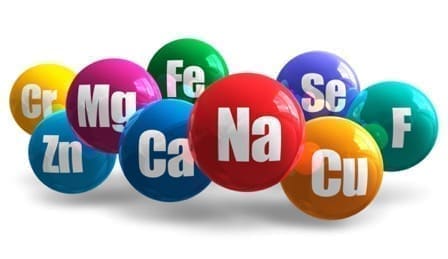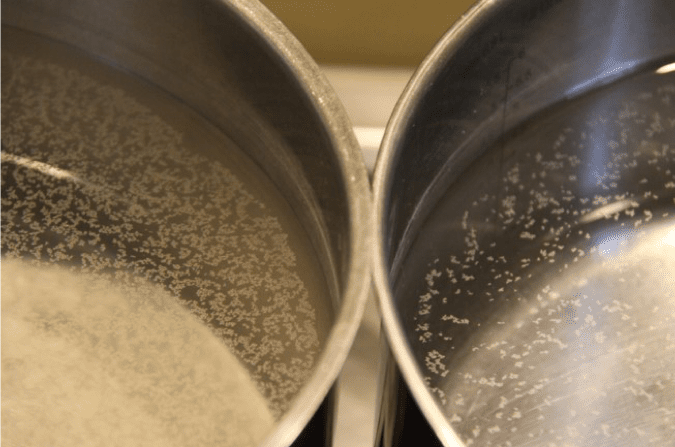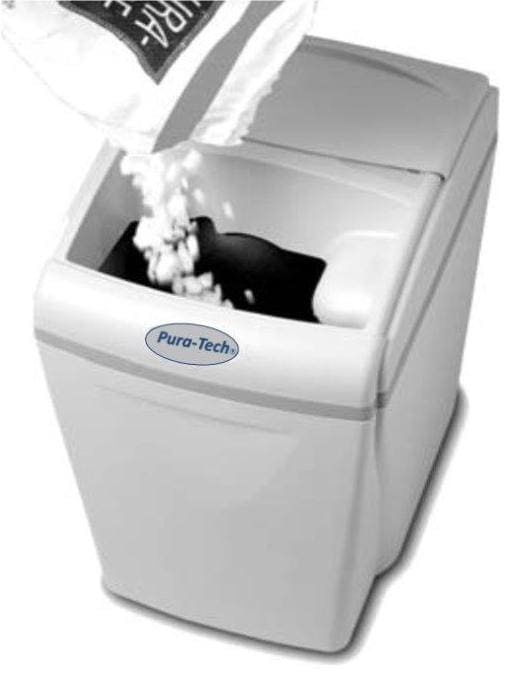
Importance of minerals in potable water
- Natural waters contain inorganic mineral salts, mainly calcium and magnesium (+/- 80%). These minerals are partly metabolizable by the body (intestinal absorption). Studies on the subject estimate this rate of assimilation between 5% and 25%!
- The minerals contained in natural water therefore participate between 20% and 50% in the Recommended Nutritional Intake (RNI) of calcium and magnesium* for one person (for an adult M / F: calcium requirement +/- 900 mg /d, in magnesium +/- 400 mg /d)! Calcium and magnesium are therefore useful for health. Calcium contributes to bone health, has a beneficial role in hypertension, cardiovascular accidents, colon cancer. Magnesium is involved in the activation of more than 300 enzymatic systems, fights fatigue, diabetes and coronary insufficiency as well as osteoporosis … Knowing that the average population has an average calcium deficiency of +/- 40% (average nutritional needs) and even 70% for magnesium, it seems us essential to drink water with a mineral content of around +/- 400 to 500 mg / L! * This depends on the mineral content of the water and the age of the people concerned, Source: Study on the absorption of calcium and magnesium in natural mineral waters, Patrice Fardellone, CHU Amiens, Université Picardie Jules-Verne, 2015 ; « The mineral elements present in tap water, by participating in the daily mineral supply necessary for the proper functioning of the body, have a definite beneficial role for health. Calcium in water could also play a role in protecting against cardiovascular disease. The role of calcium in fat elimination and blood cholesterol regulation is also recognised » (source Ministry of Health France 2006).
- The WHO (World Health Organization) speaks of an “optimum below 1000 mg / liter“.
- The Superior Council of Public Hygiene of France fixes in its decrees of 1990 and 1995 relating to the quality of water intended for human consumption the quantity of dry residues, after drying at 180 ° C, at maximum 1,500 mg / liter.
- It is also important to have calcium-magnesium (components of limescale) in the water because of the rounder and velvety taste of water containing mineral salts.
What is limescale ?
All mineralized water (including tap water) contains limestone which is transformed under the effect of heat into scale which initially appears in the form of aragonite (softer and more soluble scale) which eventually turns into calcite (hard and compact scale which becomes encrusted and hardens inside sanitary pipes).
This limestone will precipitate around the resistances of the boiler-water heater (which heats the water up to a maximum of 55 ° C) and will turn into tartar, which will reduce its energy efficiency, but it will, in time, also become embedded to the inside of the sanitary pipes with the risk of clogging them!
In order to avoid these inconveniences, it is therefore necessary to treat this limestone by transforming its mineralogical structure in order to make it more soluble, which prevents it from becoming encrusted. Limestone therefore remains present in the water, but it no longer has any inconveniences.
Thanks to its permanent magnets and the magnetic fields generated, the Biodynamizer treats limestone for all tap water with a hardness of up to 40 ° f (French degree).
Above 40 ° f of city water hardness (very hard water), we therefore recommend placing an additional limescale treatment device, the Biolimescaler (in addition to the Biodynamizer). It additionally treats limestone by transforming its mineralogical structure in the form of calcite into aragonite (white powder which is easily evacuated) as well as the morphology of limestone crystals (their size increases = early germination of tartar). In addition, the Biolimescaler helps to eliminate existing encrustations in the pipes.
Water hardness scale: Depending on the geological nature of the soil, the physico–chemical composition of the water will not be the same. Thus, water passing through a limescale soil or chalky soil will provide water with a high limescale content while water passing through rocky or sandy soils will be considered as soft:
- from 0 to 5 ° f: very soft water
- from 5 to 15 ° f: soft water
- from 15 to 25 ° f: medium hard water
- from 25 to 40 ° f: hard water
- > at 40 ° f: very hard water (plan in this case an adapted treatment of limestone as the Biolimescaler!)

Pan test: restructuring of the limescale after boiling, comparison between tap water (left) and dynamized water (right)
Dynamization will modify the structure of limescale in water
The Biodynamizer® treats limescale with the mechanical vortices & magnetic vortices by modifying its mineralogical structure (calcite -> aragonite -> vaterite) and the morphology of limescale crystals (their size increases).
The polarization of the water molecules induced by the magnetisation makes it possible to increase the coagulation of the limescale crystals (early germination) which reduces the drawbacks of limescale (which clings to the walls):
- The mass of scale remaining around the resistors and in the bottom of the boiler decreases (temperature at max 60 ° C, 130L / day)
- The adhesion of limescale inside the sanitary pipes decreases markedly
This is done in the Biodynamizer® thanks to:
- The combination of a fast-turbulent flow and a strong magnetic field who amplify the efficiency of the magnetic treatment of limescale. The magnetic force potential will be proportional to the velocity of the flow inside the vortex.
- The alternating strength and orientation of magnetization (N/S – S/N) as well as the magnetization of the copper tubes increases the magnetic gradients (= (= the strength of the lines of magnetic fields in space) and also improves the efficiency of the treatment of limescale.
The disadvantages of a water softener
- Does not filter pollutants in the water
- Altered taste of water (salt taste due to sodium)
- Removes much of the precious minerals (containing trace elements)
- Does not provide a limescale protective layer on the inner surface of the pipes which protects against corrosion of galvanized pipes (if set to ≤ 5 ° f)
- Adds sodium to the water (Na + = +/- 60% of the salt composition; = +/- 140 mg / L for a reduction in hardness from 30 ° f to 5 ° f; recommendations for sodium consumption for humans: max 200 mg / L (according to European directive on drinking water 98/83) because sodium increases blood pressure (bad for people with heart or kidney problems)
- Its operation uses +/- 100 Kg / year of salt (Sodium Chloride: Na + Cl-) for its regeneration; this produces chlorine dioxide (salt + chlorine from city water) which is released into the water which corrodes the galvanized pipes!
- Releases brine (limescale + chlorite) to the environment (via sewers)
- Discards a lot of water for regeneration (100 L of water per regeneration which takes place every 5 days!)
- There is a risk of development of bacteria & germs in the ion exchange chemical resins if there is no regular maintenance (after 5 years of operation: An annual maintenance is compulsory in order to disinfect the resins! Otherwise there is a risk of bacteriological contamination of the water by microorganisms!).

Maintenance of the most common household appliances

- For the iron, use distilled water from the clothes dryer to prevent it from getting clogged (standard procedure),
- For taps, wipe a cloth (if necessary, with white vinegar) every 15-30 days at the outlet of your taps (this is a standard maintenance).
- For shower heads, soak them every 6 months in white vinegar (this is standard maintenance).
- For kettles or coffee machines, do not allow the water to boil at 100 ° C (60-70 ° C is clearly sufficient), because water vapor tends to precipitate limescale. Renew the water for each boil + regularly clean the bottom of the container with white vinegar to descale it. This is a standard maintenance depending on the interior coating of the devices,
- Regarding the dishwasher, standard maintenance: rinse aid, dishwasher tablets for the shine of glasses, regenerating salt in the dishwasher, regular cleaning of the dishwasher filter; in case of very hard water, use crystallized citric acid (in combination with the tablets).
- For shower screens (normal cleaning),
- Water decanters, clean the bottom with white vinegar or citric acid in water,
- For the washing machine you can continue to use fabric softener (but it will be less necessary).





